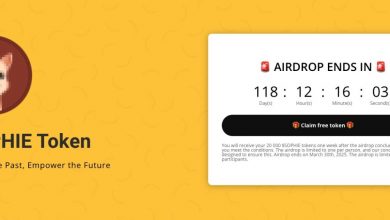Overcoming the Challenges of Open-Source Development with Light Chain Protocol AI

As the digital landscape evolves, the quest for decentralized models of governance and collaboration within artificial intelligence (AI) frameworks is gaining momentum. Among several pioneering projects making strides in this arena, Light Chain Protocol AI, with its vision of a community-driven Artificial Intelligence Virtual Machine (AIVM), stands out by effectively tackling the key challenges associated with open-source development.
Addressing Core Challenges in Open-Source Development
The development of decentralized systems, particularly in the realm of AI, comes with its own set of hurdles. Light Chain AI has identified these challenges and crafted strategic solutions to ensure a robust and secure ecosystem.
1. Ensuring Quality and Security
Challenge: One of the most pressing issues in open-source projects is the potential for poor-quality code or malicious contributions, which can introduce vulnerabilities and compromise system integrity.
Solution: Light Chain Protocol AI emphasizes the implementation of rigorous peer review processes as a first line of defense. Moreover, to further encourage scrutiny and diligence, the platform offers bounties for individuals who identify vulnerabilities, fostering a culture of collective responsibility and vigilance.
2. Preventing Governance Centralization
Challenge: In decentralized networks, token concentration poses a significant risk, as decision-making could become dominated by a select group of large holders, sidelining the voices of smaller stakeholders.
Solution: To counteract this issue, Light Chain AI employs quadratic voting, which amplifies the influence of smaller token holders, ensuring that governance reflects a more democratic process. Additionally, the introduction of delegated voting allows less active participants to entrust their voting power to representatives, maintaining engagement and reducing apathy.
3. Sustaining Developer Participation
Challenge: Maintaining consistent contributions in an open-source environment can be challenging, especially as project momentum wanes.
Solution: Light Chain AI combines token rewards, a reputation system, and intrinsic motivation through the promise of meaningful work to sustain developer interest. This multifaceted approach not only incentivizes contributions but also fosters a thriving community culture.
Through these thoughtful strategies, Light Chain AI is laying the groundwork for a comprehensive framework that addresses the inherent challenges of decentralized development, setting an industry benchmark for collaborative efforts in AI.
The Roadmap for Collaborative AIVM Evolution
Light Chain AI’s approach to evolving the AIVM is methodical and strategic. By striking a balance between innovation and community-driven governance, it aspires to create a dynamic ecosystem that benefits all stakeholders.
- Governance Framework Design: Development of smart contracts tailored for proposal submission, review, and voting processes, complete with rules and thresholds to guide decision-making.
- Developer Portal Launch: A user-friendly platform that integrates open-source repositories and facilitates discussions and collaborations among developers.
- Incentive System Deployment: Introduction of token-based rewards and reputation-building systems aimed at incentivizing both technical and governance participation.
- Pilot Phase: Implementation of smaller updates to test contribution workflows, identify bottlenecks, and refine existing processes.
- Full Rollout: Expansion into large-scale contributions anchored by a mature governance and incentive framework, paving the way for a sophisticated AIVM that evolves through collective intelligence.
Through this iterative process, Light Chain AI is poised to emerge as the gold standard for decentralized AI platforms, ensuring that the contributions of developers and stakeholders are effectively harnessed and recognized.
Tokenomics and Ecosystem Sustainability
At the heart of Light Chain AI’s operation is the Light Chain Token (LCAI), which serves as the lifeblood of the ecosystem. The right tokenomics framework not only sustains long-term viability but also fosters a collaborative atmosphere.
Token Utility
The utility of LCAI spans across various functions:
- Payments for AI Tasks: Users leverage LCAI tokens to access AI services like model inference, training, and data analysis via the AIVM, ensuring nodes fulfill computational demands while generating ecosystem value.
- Staking for Governance Participation: Stakeholders can stake LCAI to participate in governance decisions, with their staked tokens granting them voting power on critical proposals.
- Access to Premium AIVM Features: Developers and enterprises that stake LCAI tokens can unlock advanced features, reinforcing the token’s demand as the platform scales.
Token Distribution and Economic Design
To cultivate a thriving ecosystem, Light Chain AI has crafted a thoughtful distribution model:
- Early Developers and Validators: Allocating a portion of tokens to early contributors encourages immediate network activation.
- Ecosystem Growth Fund: Reserved tokens support partnerships, grants, and marketing, ensuring robust platform reach and continuous development.
- Community Rewards: Tokens are granted for participation in governance and contributions to the AIVM.
The economic design also ensures sustainability through adaptive inflation control, token-burning mechanisms that reduce supply, and a sustainability fund that promotes ongoing maintenance and security audits.
Website: https://lightchain.ai
Whitepaper: https://lightchain.ai/lightchain-whitepaper.pdf
Twitter/X: https://x.com/lightchainai
Telegram: https://t.me/LightchainProtocol





